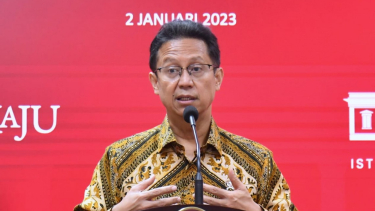Dengue Fever May Rise During El Nino Phenomenon, Minister Says
- ANTARA FOTO/Anis Efizudin
Jakarta – Dengue fever cases may rise during the El Nino phenomenon in Indonesia, which is predicted to end until December 2023, according to the Health Minister Budi Gunadi Sadikin.
"Dengue fever in Indonesia has been increasing over the last 50 years. After observing the pattern, the increase occurs during El Nino," Minister Sadikin said in a Working Meeting of Commission IX of the House of Representatives followed online in Jakarta, on Tuesday.
Menteri kesehatan RI Budi Gunadi Sadikin di Istana Kepresidenan, Jakarta
- Biro Pers, Media dan Informasi Sekretariat Presiden
The Minister further said that El Nino is a natural distortion incident that inhibits the growth of rain clouds due to disturbances in the atmosphere.
The El Nino phenomenon in Indonesia, said Budi, is predicted to reach its peak in late December 2023 or early January 2024 with low to moderate heat levels.
"El Nino is called Ocean Nino Index (ONI). Normally it is 1, if 1.5 it is strong, above 2 it is very strong," Minister Sadikin informed.
The Minister emphasized climate change trends have also triggered temperatures in Indonesia to approach moderate at level 2.
"Well, the latest data last week was 1.5 and will continue to increase," he said.
Minister Sadikin remarked the El Nino phenomenon not only affects the food security sector, but also public health, which is triggered by mosquito bites.
Ilustrasi El Nino.
Previously, Director of Communicable Disease Prevention and Control at the Indonesian Ministry of Health Imran Pambudi said the Aedes Aegypti mosquito tends to be more virulent in hot temperature situations.
"Biting frequency will increase three to five times on the temperature rises above 30 degrees,"
Moreover, the Directorate General of Communicable Disease Prevention and Control (P2P) of the Indonesian Ministry of Health reports that the number of dengue fever cases in Indonesia averages 74,000 to 140,000 per year.
Cases of dengue fever from January to November 2023 reached 76,449 patients with 571 deaths.
The number was successfully reduced to half of the number of cases in 2022 of 143,300 patients with 1,236 deaths, thanks to the intervention of fogging, larvicidation, use of mosquito nets, 3M, and the One House One Friday Movement.





























